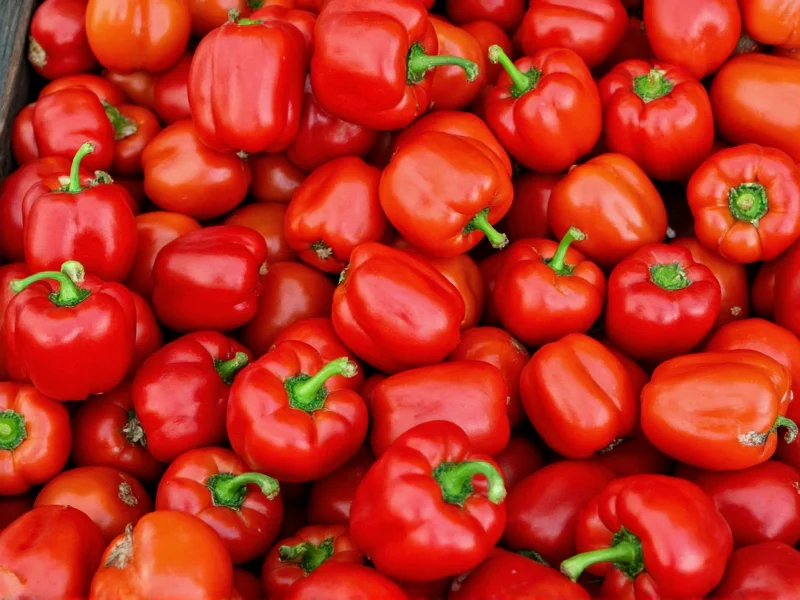Paprika primarily originates from Central and Eastern Europe, with Hungary being the most renowned source. The spice is made from ground Capsicum annuum peppers, with specific regional varieties like Hungarian sweet paprika (Édesnemes) and Spanish smoked paprika (Pimentón) representing the highest quality sources globally.
Paprika isn't just a simple spice—it's a culinary tradition with deep geographical roots that significantly impact its flavor profile. Understanding paprika sources helps cooks select the right variety for authentic dishes, from Hungarian goulash to Spanish chorizo. The distinctive taste, color, and heat level of paprika depend entirely on where the peppers are grown and how they're processed.
Historical Origins of Paprika
Paprika's journey began in the Americas, where indigenous peoples cultivated chili peppers for thousands of years. Christopher Columbus brought Capsicum peppers to Europe in the late 15th century, but it was the Ottoman Empire's expansion into Hungary in the 16th century that established paprika as a central European staple. Hungarian farmers discovered that their climate and soil produced exceptionally flavorful sweet peppers, leading to the development of paprika as we know it today. By the 19th century, Hungary had become the epicenter of paprika production, with the town of Kalocsa emerging as the "paprika capital." The Hungarian government even established strict quality standards in 1873, recognizing paprika's economic and cultural importance. Spain later developed its own paprika tradition, particularly in the Extremadura region, where peppers are smoked over oak fires to create Pimentón.Primary Paprika Production Regions
The world's most significant paprika sources maintain geographical indications that protect their authenticity:| Region | Protected Designation | Key Characteristics |
|---|---|---|
| Hungary (Kalocsa, Szeged) | Hungarian Paprika PDO | Sweet, vibrant red, medium heat, fruity notes |
| Spain (Extremadura) | Pimentón de la Vera PDO | Smoked flavor, ranges from sweet to hot |
| Serbia (Deliblato) | Deliblatski paprika PGI | Balanced heat, earthy flavor |
| California, USA | No formal protection | Milder, consistent quality for commercial use |
Hungary: The Heart of Paprika Production
Hungary produces approximately 3,000-4,000 tons of paprika annually, with the southern regions of Kalocsa and Szeged accounting for 90% of production. The unique combination of fertile soil, ample sunshine, and traditional processing methods creates paprika with superior color and flavor. Hungarian paprika comes in eight official varieties, ranging from mild Édesnemes ("noble sweet") to the fiery Erős ("strong"). The harvesting process remains largely traditional—peppers are hand-picked at peak ripeness, then strung on threads and hung to dry in special drying rooms called "szárítók." This slow drying process preserves the vibrant red color and develops complex flavor compounds that machine-dried alternatives cannot replicate.Spain: The Art of Smoked Paprika
Spain's Pimentón de la Vera, produced in the mountainous region of Extremadura, undergoes a distinctive smoking process that gives it a unique flavor profile. Peppers are dried for 10-15 days over smoldering oak fires in traditional drying houses called "secaderos." This slow smoking process infuses the peppers with a deep, woody flavor that defines Spanish cuisine. Pimentón comes in three varieties:- Dulce (sweet) - mild with rich smokiness
- Agridulce (bittersweet) - medium heat
- Picante (spicy) - significant heat with smoky notes
How Paprika Source Affects Flavor Profile
The terroir—soil composition, climate, and cultivation practices—of each paprika source creates distinct flavor profiles that professional chefs consider essential for authentic dishes. For example:- Hungarian sweet paprika provides the characteristic flavor in traditional goulash and chicken paprikash
- Spanish smoked paprika is indispensable for authentic chorizo, patatas bravas, and romesco sauce
- Serbian paprika offers a balanced heat perfect for ajvar (roasted red pepper spread)
Selecting Authentic Paprika Based on Source
When choosing paprika, understanding its source helps ensure authenticity:- Look for protected designation labels like "Paprika Hőnös" (Hungary) or "Pimentón de la Vera" (Spain)
- Check the ingredient list—authentic paprika contains only ground peppers, sometimes with minimal salt
- Color intensity indicates quality—premium paprika has a deep, vibrant red color
- Freshness matters—paprika loses potency after 6-12 months











 浙公网安备
33010002000092号
浙公网安备
33010002000092号 浙B2-20120091-4
浙B2-20120091-4